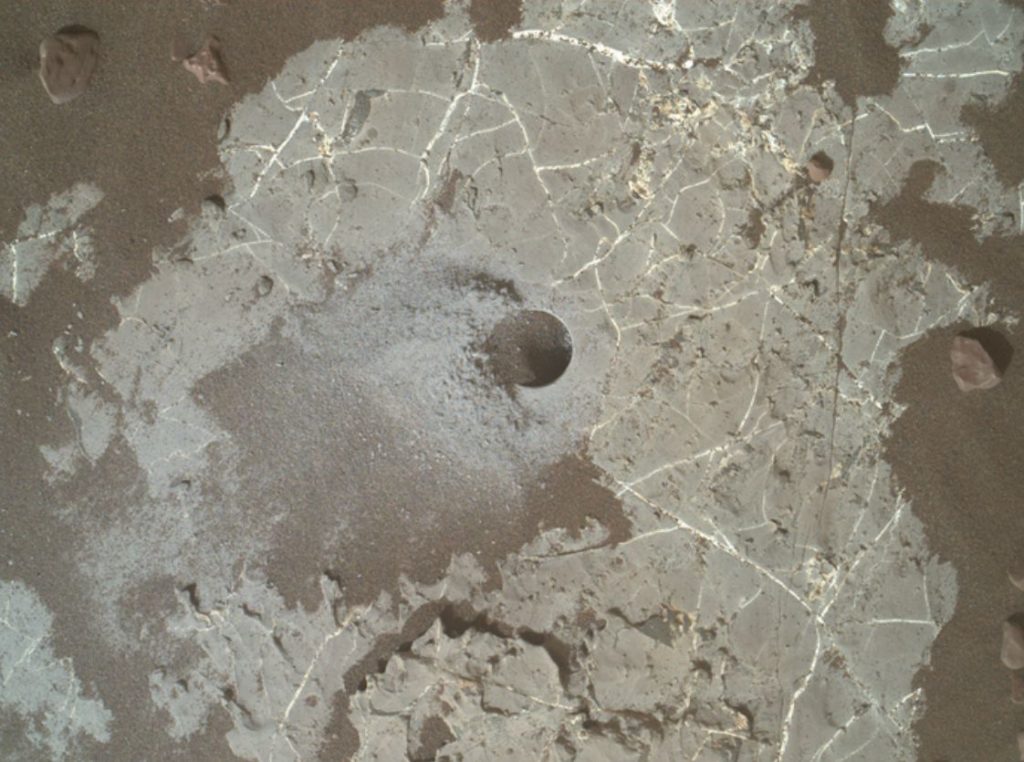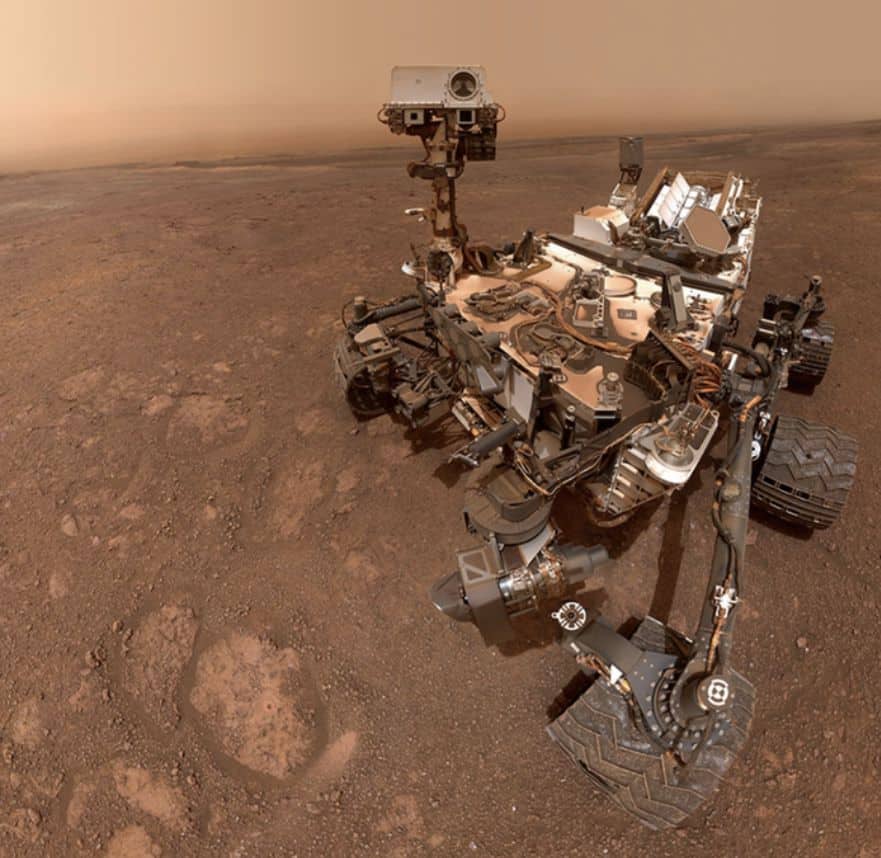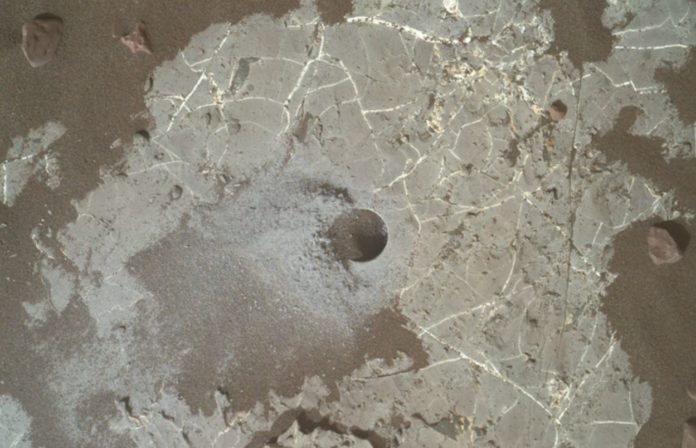“It is hard to see any of these deposition events in the Earth record.”
Curiosity, NASA’s rover, landed on Mars on Aug. 6, 2012, and has been roaming Gale Crater ever since, collecting samples and sending them back to Earth for experts to analyse.
Carbon isotope analysis of sediment samples gathered from half a dozen exposed areas, including a cliff, suggests three potential origins for the carbon: cosmic dust, ultraviolet degradation of carbon dioxide, or ultraviolet degradation of biologically produced methane.
Carbon has two stable isotopes: 12 and 13. By examining the concentrations of each in a substance, researchers can deduce details about the carbon cycle that occurred, even if it occurred eons ago.

“The amounts of carbon 12 and carbon 13 in our solar system are the amounts that existed at the formation of the solar system,” says Christopher H. House, professor of geosciences, Penn State. “Both exist in everything, but because carbon 12 reacts more quickly than carbon 13, looking at the relative amounts of each in samples can reveal the carbon cycle.”
Curiosity has spent the last nine years studying an area of Gale Crater that has unearthed layers of ancient rock, guided by NASA’s Jet Propulsion Laboratory in Southern California. Drilling into the surface of these strata allowed the rover to recover samples from the subsurface sedimentary layers. To separate any compounds, Curiosity heated the samples in the absence of oxygen. Spectrographic investigation of a sample of the reduced carbon produced by this pyrolysis revealed a wide range of carbon 12 and carbon 13 levels, depending on where and when the initial sample was formed. In carbon 13, some carbon samples were extremely depleted, while others were abundant.
“The samples extremely depleted in carbon 13 are a little like samples from Australia taken from sediment that was 2.7 billion years old,” adds House. “Those samples were caused by biological activity when methane was consumed by ancient microbial mats, but we can’t necessarily say that on Mars because it’s a planet that may have formed out of different materials and processes than Earth.”

The researchers propose three explanations for the unusually depleted samples: a cosmic dust cloud, UV radiation breaking down carbon dioxide, or ultraviolet destruction of biologically produced methane.
According to House, the solar system travels through a galactic molecular cloud every few hundred million years.
“It doesn’t deposit a lot of dust,” House adds. “It is hard to see any of these deposition events in the Earth record.”
To create a layer that Curiosity could sample, the galactic dust cloud would have first lowered the temperature on Mars that still contained water and created glaciers. The dust would have deposited on top of the ice and would then need to remain in place once the glacier melted, leaving behind a layer of dirt that included the carbon.
So far, there is limited evidence of past glaciers at Gale Crater on Mars. According to the researchers, “this explanation is plausible, but it requires additional research.”
A second possible explanation for lower amounts of carbon 13 is the ultraviolet conversion of carbon dioxide to organic compounds like formaldehyde.
“There are papers that predict that UV could cause this type of fractionation,” says House. “However, we need more experimental results showing this size fractionation so we can rule in or rule out this explanation.”
The third possible method of producing carbon 13 depleted samples has a biological basis.
On Earth, a strongly carbon 13 depleted signature from a paleosurface would indicate past microbes consumed microbially produced methane. Ancient Mars may have had large plumes of methane being released from the subsurface where methane production would have been energetically favorable. Then, the released methane would either be consumed by surface microbes or react with ultraviolet light and be deposited directly on the surface.
However, according to the researchers, there is currently no sedimentary evidence of surface microbes on the past Mars landscape, and so the biological explanation highlighted in the paper relies on ultraviolet light to place the carbon 13 signal onto the ground.
“All three possibilities point to an unusual carbon cycle unlike anything on Earth today,” according to House. “But we need more data to figure out which of these is the correct explanation. It would be nice if the rover would detect a large methane plume and measure the carbon isotopes from that, but while there are methane plumes, most are small, and no rover has sampled one large enough for the isotopes to be measured.”
House also notes that finding the remains of microbial mats or evidence of glacial deposits could also clear things up, a bit.
“We are being cautious with our interpretation, which is the best course when studying another world,” said House.
Curiosity is still collecting and analyzing samples and will be returning to the pediment where it found some of the samples in this study in about a month.
“This research accomplished a long-standing goal for Mars exploration,” said House. “To measure different carbon isotopes — one of the most important geology tools — from sediment on another habitable world, and it does so by looking at 9 years of exploration.”
Image Credit: NASA/Caltech-JPL/MSSS
You were reading: Buried sedimentary layers reveal an unusual carbon cycle on Mars
